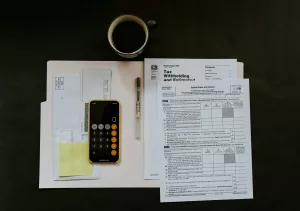New York’s diverse community and robust philanthropy create a conducive environment for nonprofits. While starting a nonprofit here can seem daunting, it is made manageable by following the 10 steps we’ll detail below. With these guidelines, you’ll navigate the process smoothly, fostering an organization that thrives amidst New York’s vibrant landscape.
1 – Define Your Mission
The first big step in creating a nonprofit organization is figuring out your mission. This isn’t just a fancy sentence for paperwork, but rather the main idea that describes why your organization exists. It’s the guiding light for all you do and sends a clear message to everyone involved – from donors and volunteers to the people you’re helping in your community.
Considerations When Creating Your Mission:
- Find Your Purpose: Start by figuring out what problem or need your nonprofit wants to tackle. Why is it a big deal? What changes do you want to make? These are important things to think about when you’re trying to put your purpose into words.
- Be Clear and Specific: Even if your cause is broad, it’s really important to be clear about what your organization does. So instead of saying, “We want to help people in need,” you might say, “We provide housing and job training for homeless veterans in New York.”
- Keep It Simple: Your mission statement should be easy for anyone to understand. Avoid using complicated words and aim for a simple, clear, and short statement.
- Make It Inspiring: Keep in mind that your mission statement is a powerful tool to inspire your team, volunteers, and donors. Make sure it’s moving, meaningful, and shows the change you want to make.
- Be Open to Change: Your mission statement doesn’t have to stay the same forever. As your nonprofit grows and things change, don’t be scared to update your mission statement so it stays current.
Remember, your mission is the foundation of your nonprofit. It shapes your plans, creates your organization’s culture, and helps you see if you’re succeeding. Taking the time to create a good mission statement will set you on the right path for doing the work that matters to you.
2 – Laws and Regulations for Nonprofits in New York
Overview of New York Nonprofit Laws
New York’s nonprofit sector is governed primarily by the Nonprofit Revitalization Act of 2013, which significantly reformed the Not-for-Profit Corporation Law (NPCL). This law was designed to reduce unnecessary and outdated burdens on nonprofits while enhancing nonprofit governance and oversight to prevent fraud and improve public trust.
Under the NPCL, nonprofit corporations in New York are classified into four types: Type A for non-business purposes (like civic or patriotic activities); Type B for charitable, educational, or religious purposes; Type C for business purposes that benefit the general public (like reducing joblessness); and Type D for any other lawful purpose.
When establishing a nonprofit, you’ll likely be considering a Type B or Type C nonprofit, depending on your specific purpose.
Required Registrations and Licenses
Before you can begin operating, your nonprofit may need to register with multiple governmental bodies:
- New York State Attorney General’s Charities Bureau: If your nonprofit is going to solicit donations in New York, you’ll need to register with the Charities Bureau. Registration involves filing your Certificate of Incorporation, bylaws, conflict of interest policy, and additional information about your directors and officers.
- New York State Department of State: To incorporate your nonprofit, you’ll need to file your Certificate of Incorporation with the Department of State. This document should include details about your nonprofit’s purpose, the type of nonprofit you’re creating, and your registered agent’s information.
- Internal Revenue Service (IRS): After incorporating at the state level, you’ll need to obtain an Employer Identification Number (EIN) from the IRS, even if you don’t plan to have employees. You’ll use your EIN on all your official paperwork, just like an individual uses their Social Security number.
Further, depending on the activities of your nonprofit, you may need additional licenses or permits. For example, if you’re operating a daycare, animal shelter, or health clinic, you’ll likely need a license from the relevant state agency.
New York’s Conflicts of Interest and Whistleblower Policies
Under the Nonprofit Revitalization Act, nonprofits with over $1 million in revenue and 20 employees must adopt a whistleblower policy to protect those who report suspected misconduct from retaliation.
Also, all nonprofits, regardless of size, must adopt a conflict of interest policy to ensure that their directors, officers, and key employees act in the nonprofit’s best interest rather than their own personal or business interests. This policy helps ensure that the nonprofit’s activities benefit the public rather than insiders.
Understanding these laws and regulations is crucial for running a compliant and successful nonprofit in New York. Legal missteps can cause significant problems down the line, including fines, loss of tax-exempt status, and damage to your nonprofit’s reputation. Therefore, consider consulting with an attorney or a knowledgeable professional in the field to ensure you understand and comply with all legal requirements.
3 – Select a Name
Choosing the right name for your nonprofit in New York is an important decision. It serves as the first impression of your organization and should represent its mission and values. Here are several steps to guide you through the process:
Brainstorm Ideas
Start by brainstorming a list of potential names that reflect your organization’s mission, values, and the community or cause you serve. Your nonprofit’s name should be clear, easy to remember, and distinct. Avoid using complicated words or acronyms that may confuse the public.
Research Existing Names
Once you have a list, you’ll need to check if your proposed names are already in use. You can do this by conducting a name search on the New York Department of State’s Corporation and Business Entity Database. This step will help ensure that your chosen name is unique and doesn’t infringe on any existing trademarks, which is essential to avoid legal issues.
Also, consider searching the United States Patent and Trademark Office’s (USPTO) database for registered trademarks. Just because a nonprofit organization in New York doesn’t have the name you want, doesn’t mean it’s not used by another nonprofit in the USA.
Follow Naming Rules
According to New York’s Nonprofit Corporation Law, the name of your nonprofit must:
- Be unique and not deceptively similar to any other corporate names on file with the Secretary of State.
- Not imply that the corporation is an entity of the government (local, state, or federal).
- Contain specific words or abbreviations like “Incorporated”, “Inc.”, “Corporation”, or “Corp.”
The name must not contain certain words or phrases unless you receive special approval. These include but are not limited to “Exchange”, “Board of Trade”, “Bank”, “Insurance”, “Benevolent”, “Education”, “University”, “School”, “College”, “Library”, and more.
Consider Your Online Presence
Check if your proposed name (or a close variant) is available as a domain name for your website. Even if you’re not planning to launch a website immediately, securing a relevant domain name now will help maintain a consistent brand in the future.
Make a Final Decision and Register
Once you have researched and found a suitable and available name, the final step is to officially register your nonprofit’s name when you file the Certificate of Incorporation with the New York Department of State. This filing legally creates your nonprofit and reserves your chosen name.
By following these steps, you’ll select a meaningful, legally compliant, and brandable name that can serve your nonprofit well in its mission to make a positive impact.
4 – Create Bylaws
Bylaws are one of the most critical legal documents for your nonprofit organization. They act as the constitution for your nonprofit, outlining its structure, governance, and operations. In New York, a nonprofit’s bylaws are required by the Nonprofit Corporation Law (NPCL). Here are steps and considerations for drafting your nonprofit’s bylaws:
Understand the Legal Requirements
New York law requires certain elements to be present in your bylaws. These include the process for selecting directors, their term limits, officers’ roles and responsibilities, rules for regular and special meetings, voting procedures, and the process for amending the bylaws. Review the NPCL or consult with a legal professional to understand these requirements.
Establish the Board of Directors
Your bylaws should specify the size of your board of directors (New York requires a minimum of three), how directors are elected or appointed, their term lengths, the process for removing a director, and the responsibilities and powers of the board.
Define Officers’ Roles
Outline the roles and duties of your nonprofit’s officers. Typically, a nonprofit has at least a President, Secretary, and Treasurer. The bylaws should state how officers are elected, their term lengths, and procedures for removal.
Detail Meeting Procedures
Your bylaws should provide guidelines for conducting meetings, including how often board meetings are held, how special meetings can be called, and what constitutes a quorum for voting purposes. The bylaws should also explain voting rights and procedures, including what percentage of votes is needed to approve decisions.
Set Policies for Conflicts of Interest
New York law requires all nonprofits to have a conflict of interest policy, ensuring that decisions are made in the best interest of the organization and not for personal gain. The bylaws should outline how potential conflicts of interest are identified and managed.
Plan for Bylaws Amendments
Set forth the procedure for amending the bylaws, including who can propose amendments and how votes on amendments are conducted.
Review and Adopt the Bylaws
Once your bylaws have been drafted, they should be reviewed by your board of directors. The board must formally adopt the bylaws at its first meeting. Record the adoption of the bylaws in the meeting minutes and have a copy available for reference during board meetings.
Review the Bylaws Regularly
Bylaws should be reviewed regularly (at least every few years) to ensure they remain relevant and comply with any changes in laws and regulations.
While drafting bylaws, it’s a good idea to consult with an attorney experienced in nonprofit law to ensure that your bylaws are legally sound and appropriate for your organization’s needs. Remember, your bylaws act as a roadmap guiding your nonprofit’s operations, so it’s important to create them thoughtfully and thoroughly.
5 – Form a Board of Directors
Forming a board of directors is a crucial step when establishing a nonprofit in New York. The board serves as the governing body of your organization, overseeing its operations, ensuring legal compliance, and guiding strategic direction. Here’s how to go about creating a board of directors for your nonprofit:
Identify Skills and Expertise Needed
Assess what skills, experience, and connections will be most beneficial to your nonprofit. This can depend on your nonprofit’s mission, current stage of development, and strategic goals. For example, you may want individuals with experience in finance, legal matters, fundraising, marketing, the community you serve, or the sector your nonprofit operates within.
Recruit Board Members
Reach out to potential board members who meet your identified needs. Consider your personal and professional network, volunteers, or donors already involved with your organization. There are also online platforms and local community organizations that can help connect you with potential board members.
Ensure potential board members understand the roles and responsibilities involved, including attending board meetings, actively participating in decision-making, overseeing the organization’s operations and finances, and contributing to fundraising efforts.
Establish Roles within the Board
At a minimum, your board should have a President, a Secretary, and a Treasurer, each with defined roles and responsibilities. Larger boards may also have Vice Presidents, or Chairs and Co-Chairs of different committees.
Hold an Organizational Meeting
Once your board is selected, hold an organizational meeting to adopt the bylaws, elect officers, and establish committees. The board should also approve initial resolutions, such as opening a bank account. Document all decisions made during this meeting in the minutes, which should be recorded by the Secretary.
Implement Regular Board Meetings
Set a regular schedule for board meetings. The frequency of these meetings will depend on your nonprofit’s needs but should be at least annually.
Regularly Evaluate and Rejuvenate the Board
The board should be dynamic, adjusting to the changing needs of your nonprofit. Regularly review the board’s composition and performance, and consider bringing in new members with different skills or perspectives as required.
Creating an effective board of directors requires thought, planning, and ongoing attention. The right board can provide the leadership and guidance necessary to help your nonprofit thrive and achieve its mission.
6 – File a Certificate of Incorporation
You can file articles of incorporation for your nonprofit in New York by filing a Certificate of Incorporation with the Department of State. It officially registers your nonprofit with the state and sets the legal foundation of your organization. Here’s how to go about this process:
Prepare the Certificate of Incorporation
Your Certificate of Incorporation should include the following:
- Name of the Nonprofit: This should be the exact name you’ve selected and confirmed is available during your name search.
- Type of Nonprofit Corporation: As mentioned earlier, New York classifies nonprofits into four types: Type A for non-business purposes; Type B for charitable, educational, or religious purposes; Type C for business purposes that serve the public interest; and Type D for any other lawful purpose. Most nonprofits fall into Type B or Type C.
- Purpose Statement: This should be a clear, succinct statement describing why your nonprofit exists and the specific activities it will undertake to fulfill its mission. Be aware that the language in this statement has implications for obtaining tax-exempt status, particularly with the IRS.
- Duration: Most nonprofits are intended to exist perpetually, but if you have a fixed term in mind, you should specify it.
- Names and Addresses of the Initial Directors: You must name at least three directors who will be serving on the initial board.
- Name and Address of the Registered Agent: The registered agent is the person who will receive official correspondence from the state. This can be an individual (like a board member) or a company that provides registered agent services.
- Statement of Nonprofit Operation: This declares that the corporation will not distribute any profits to members, directors, or officers and will operate on a nonprofit basis.
- Dissolution Clause: This outlines what happens to the nonprofit’s assets if the organization is dissolved. To obtain tax-exempt status, this clause needs to specify that assets will be distributed to another nonprofit or for another exempt purpose.
File the Certificate of Incorporation
Once you’ve prepared your Certificate of Incorporation, submit it to the New York Department of State. You can file online, by mail, or in person.
Await Confirmation
After submission, the Department of State will review your filing. If everything is in order, they will file the document and return a filed copy to you. Your nonprofit is officially formed as of the date the Certificate of Incorporation is filed.
7 – Obtain an Employer Identification Number (EIN)
Obtaining an Employer Identification Number (EIN), also known as a Federal Tax Identification Number, is a necessary step after you’ve incorporated your nonprofit in New York. The EIN is like a social security number for your organization, and it’s used by the Internal Revenue Service (IRS) to identify entities for tax purposes. You’ll need an EIN to open a bank account, apply for tax-exempt status, file tax returns, and for other business purposes.
Here’s how you can obtain an EIN for your nonprofit:
Determine Your Eligibility
Your organization is eligible to apply for an EIN once it’s legally formed as a nonprofit corporation. The individual applying online must have a valid Taxpayer Identification Number, such as a Social Security Number.
Apply Online
The IRS prefers that entities apply for an EIN online. The online application process is straightforward and allows you to receive your EIN immediately. Here are the steps:
- Visit the IRS’s EIN application page.
- Click “Apply Online Now”.
- Click “Begin Application” and select “View Additional Types”, then “Nonprofit organization”.
- Answer the questionnaire that follows. It will ask about details such as the responsible party, the purpose of the nonprofit, specific activities, etc.
- After submitting the application, if everything is in order, you’ll receive your EIN immediately.
The online service is available Monday through Friday, from 7 a.m. to 10 p.m. EST.
Apply via Mail or Fax
If you prefer, you can apply for an EIN by fax or mail. Download Form SS-4 from the IRS website, complete it and send it to the appropriate fax number or mailing address provided in the form’s instructions. If you’re faxing the form, you can expect to receive your EIN within four business days. If you’re mailing the form, it can take up to four weeks.
Secure Your EIN
Once you receive your EIN, keep this number secure and readily accessible. You’ll need it frequently throughout the life of your nonprofit.
8 – Apply for Tax Exemption
After obtaining your 501(c)(3) status, you may also need to apply for tax-exempt status for state taxes in New York. Here’s a general overview of the process for obtaining tax-exempt status as per New York law:
Federal Tax Exemption: Before you apply for state tax exemptions, you will need to obtain federal tax-exempt status from the IRS website. This typically involves submitting Form 1023 (or Form 1023-EZ for smaller organizations) and providing information about your organization’s purpose, structure, governance, and finances.
New York State Corporate Income Tax Exemption: Once you have your 501(c)(3) determination letter from the IRS, you can apply for a New York State corporate income tax exemption. You’ll need to file Form CT-247, “Application for Exemption from Corporation Franchise Taxes by a Not-for-Profit Organization,” with the New York State Department of Taxation and Finance.
Sales and Use Tax Exemption: To apply for exemption from sales and use tax in New York, you will need to file Form ST-119.2, “Application for an Exempt Organization Certificate,” with the New York State Department of Taxation and Finance. If approved, you will receive Form ST-119, an Exempt Organization Certificate, which you can use to make tax-free purchases that are related to your organization’s exempt purpose.
Property Tax Exemption: Nonprofits may also be eligible for property tax exemptions in New York. This process is managed at the local level, and the specific requirements and procedures can vary by municipality. Generally, you will need to demonstrate that the property is being used for the organization’s tax-exempt purposes.
With all this, you will still likely need to file annual returns with both the IRS (Form 990 or a variant thereof) and the New York State Department of Taxation and Finance (Form CT-13).
9 – Obtain Necessary Licenses and Permits
Depending on the activities of your nonprofit, you may need various licenses and permits from state, county, and municipal agencies. Below is the list of licenses you require to successfully set up a nonprofit organization in New York:
General Business License
While not all nonprofits will need a general business license, it’s always a good idea to check with your city or county government to determine if this type of license is required for your operations.
Fundraising License
Any organization that solicits donations from New York residents generally must register with the New York Attorney General’s Charities Bureau. This rule applies regardless of the organization’s location and the registration should occur before starting fundraising activities. This involves completing Form CHAR410 and submitting it along with the necessary fees and supporting documents.
Special Event Permits
If your organization is planning to host special events, like outdoor festivals, races, or concerts, you may need to obtain special permits from the city or county where the event will be held.
Health Permits
If your nonprofit is involved in preparing or distributing food, whether regularly or at special events, you may need a health permit. The specifics of this will depend on your local health department’s rules and regulations.
Building and Zoning Permits
You may need to apply for a building permit if you plan to build or significantly alter a property. If your nonprofit’s operations involve activities that local zoning laws could regulate, such as operating a shelter in a residential area, a zoning variance may be necessary.
Professional Licenses
If your organization provides services that are typically regulated at the state level, such as medical or legal services, the professionals providing those services will need to hold the appropriate state license.
Sales Tax Exemption
While not a license, obtaining a sales tax exemption is a critical step for many nonprofits. In New York, you can apply for this exemption through the Department of Taxation and Finance using Form ST-119.2
10 – Register with the New York Attorney General’s Charities Bureau
Most charitable organizations in New York are required to register before they can begin fundraising activities. This state agency is responsible for supervising charitable organizations to ensure that they use their funds effectively for their intended purpose.
Here’s how you can register your nonprofit with the Charities Bureau:
Determine if You Need to Register
Most nonprofits in New York are required to register with the Charities Bureau. However, certain organizations are exempt, including religious institutions, governmental agencies, educational institutions, membership organizations operating for the benefit of their members, and nonprofits that don’t solicit contributions. If you’re unsure, consult with a legal professional or contact the Charities Bureau.
Complete the Registration Form
If your nonprofit needs to register, you’ll need to complete Form CHAR410, the Registration Statement for Charitable Organizations. The form requires information about your nonprofit, including its name, EIN, contact information, names of officers and directors, and a brief description of your charitable program.
Attach Required Documents
Along with Form CHAR410, you need to attach several documents:
- A copy of your Certificate of Incorporation and any amendments.
- A copy of your bylaws and any amendments.
- A copy of your IRS determination letter if you have already received tax-exempt status.
- If you have not yet received tax-exempt status, a pro forma IRS Form 1023, Application for Recognition of Exemption Under Section 501(c)(3) of the Internal Revenue Code.
Submit the Registration Form and Documents
Mail the completed Form CHAR410, the required documents, and the registration fee to the address listed on the form.
Await Confirmation
After the Charities Bureau reviews your submission, they will send a letter confirming your registration. You should keep this letter as proof of your registration for your records.
File Annual Reports
Once registered, most nonprofits must file annual financial reports with the Charities Bureau. The type of report and filing deadline depend on your nonprofit’s gross revenue and support during the fiscal year.
Remember, registering with the Charities Bureau is an essential legal requirement for most New York nonprofits. This step demonstrates your nonprofit’s commitment to transparency, helping to build trust with donors, the public, and regulatory agencies.
Conclusion
Starting a nonprofit in New York is a commitment and an opportunity to impact communities. This intricate process becomes manageable by following the above-mentioned 10 steps. These steps help establish a credible organization that embodies your dedication. It’s not just about serving a cause, it’s about building trust within the communities you aim to uplift.



